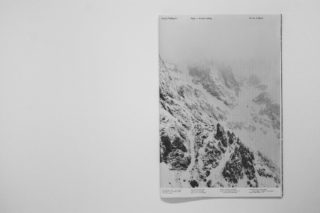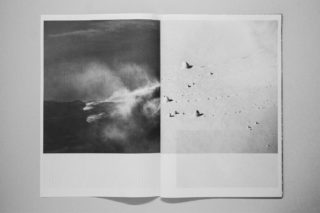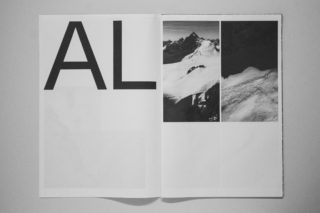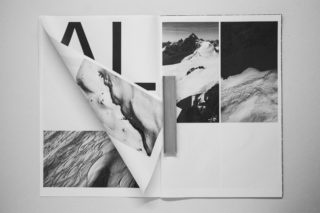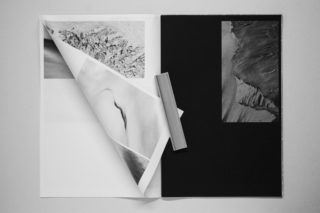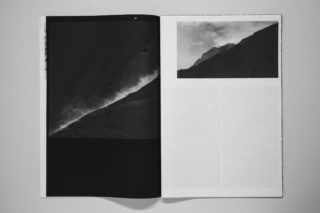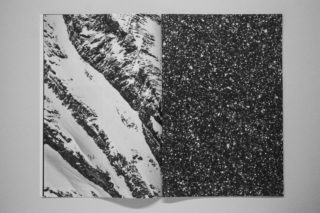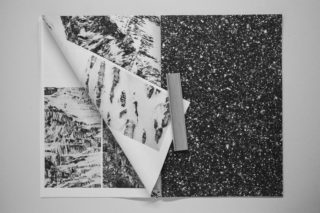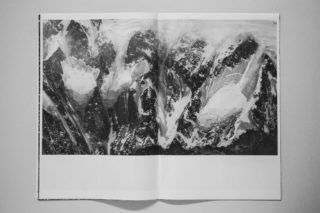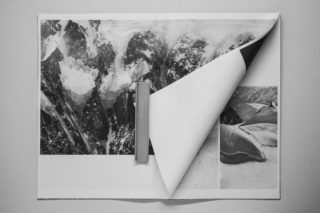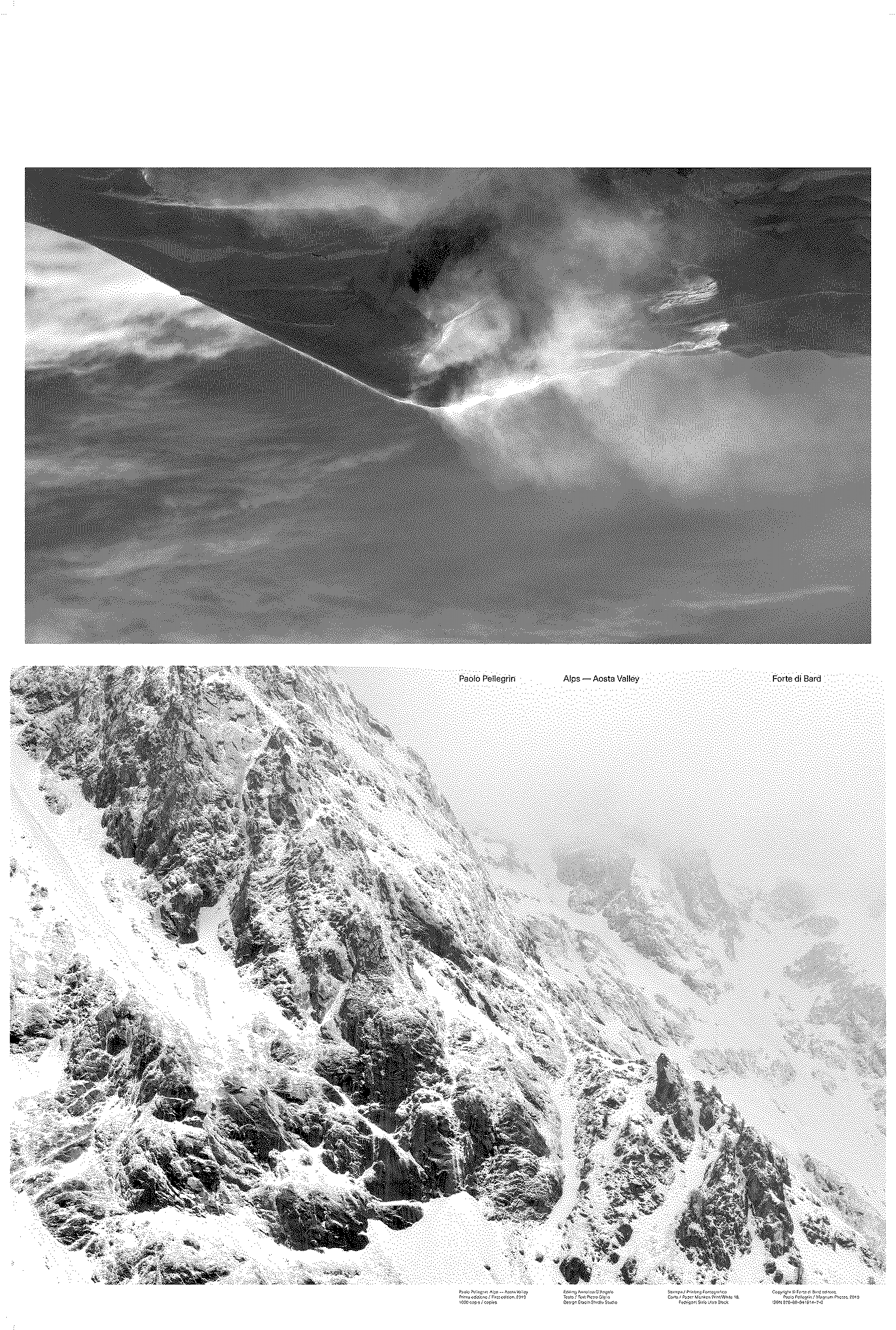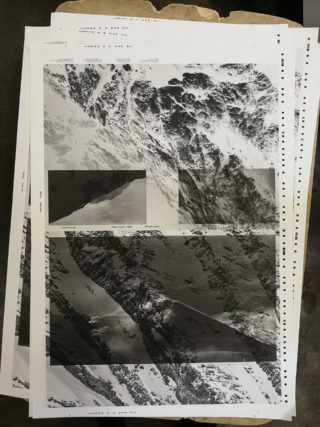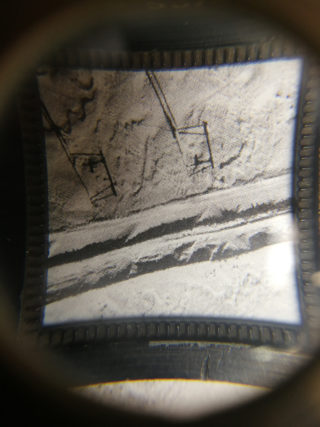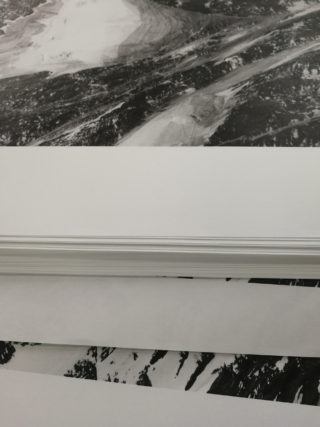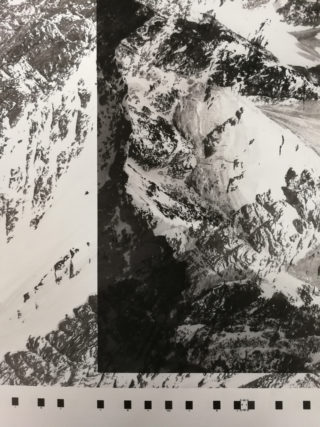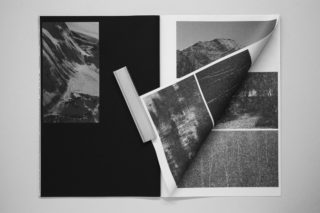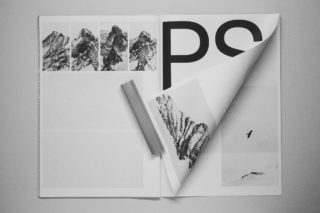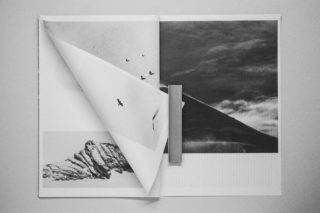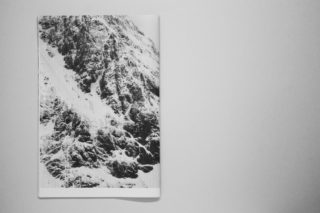Paolo Pellegrin. Alps
To pit oneself against the mountain is a uniquely human endeavor. The peaks are unconditionally high and mighty and their scale is absolute. The celebration of a conquest at high altitude is always partial, coincides with a small failure and announces a new surprise.
The images by Paolo Pellegrin tell the mysterious side of the Alps, confirming that Nature and spirituality can coincide. The alpine landscape is the result of courage and determination, but the trace of man on the mountain remains superficial. The interpretation is twofold. Amplitude and intimacy, geology and enchantment: the images of Paolo Pellegrin reveal “a territory dominated by soaring peaks that challenge the sky, but which also plunge towards an inferno of deep gorges” (1).
The size of the book refers to the attempt of Alpine cartography to describe and to contain the grandeur of the mountain and works in opposition to the very thin weight of the pages. The final dimension, given by the double fold of the spread format of a sheet, not clipped or bound, refers to the design desire to attempt a “non-anthropized” publishing project.
The fifty-two pages that make up the volume are the result of the double folding of six sheets, inserted one inside the other — plus a black sheet in which the white of the photos has been replaced with the color silver. Through this trick, some pages will be very large and enjoyable, allowing an efficient reading of the photographic details, while others pages will be much more intimate and hidden, because they are inserted between the folds of the sheets.
Images have a predominant role in the whole project, and we emphasize them by changing the scale we imposed in the layout of the book. Some images — occupying more than one page and folding in the way that they follow the fold of the sheet — they enter into relationship with each other. We can say that, in a way, the photograph remains always whole but it is the shape, the fold, of the book that creates some relationships between portions of the image, avoiding a cut: even the typography crosses more than one page and, like the images, it is decoded by moving the signatures.
The paper is consistent with the subject of the photographs with a very thin but at the same time very rough weight that allows an optimal quality of the images. The book, large and fragile, not bound, is contained in a transparent envelope that ennobles and protects the print.
The publication is curated by Annalisa D’Angelo, with a text by Pietro Giglio.
The book is part of the project dedicated to the Valle d’Aosta signed by the photographer Paolo Pellegrin, as part of Mountains by Magnum Photographers exhibition at Forte di Bard (AO) from July 17, 2019 to January 6, 2020, curated by Forte di Bard and Magnum Photos Paris.
(1) Pietro Giglio, “The hidden side of the mountain”, in Paolo Pellegrin. Alps (Bard: Forte di Bard editore, First edition 2019), 2, 50.
